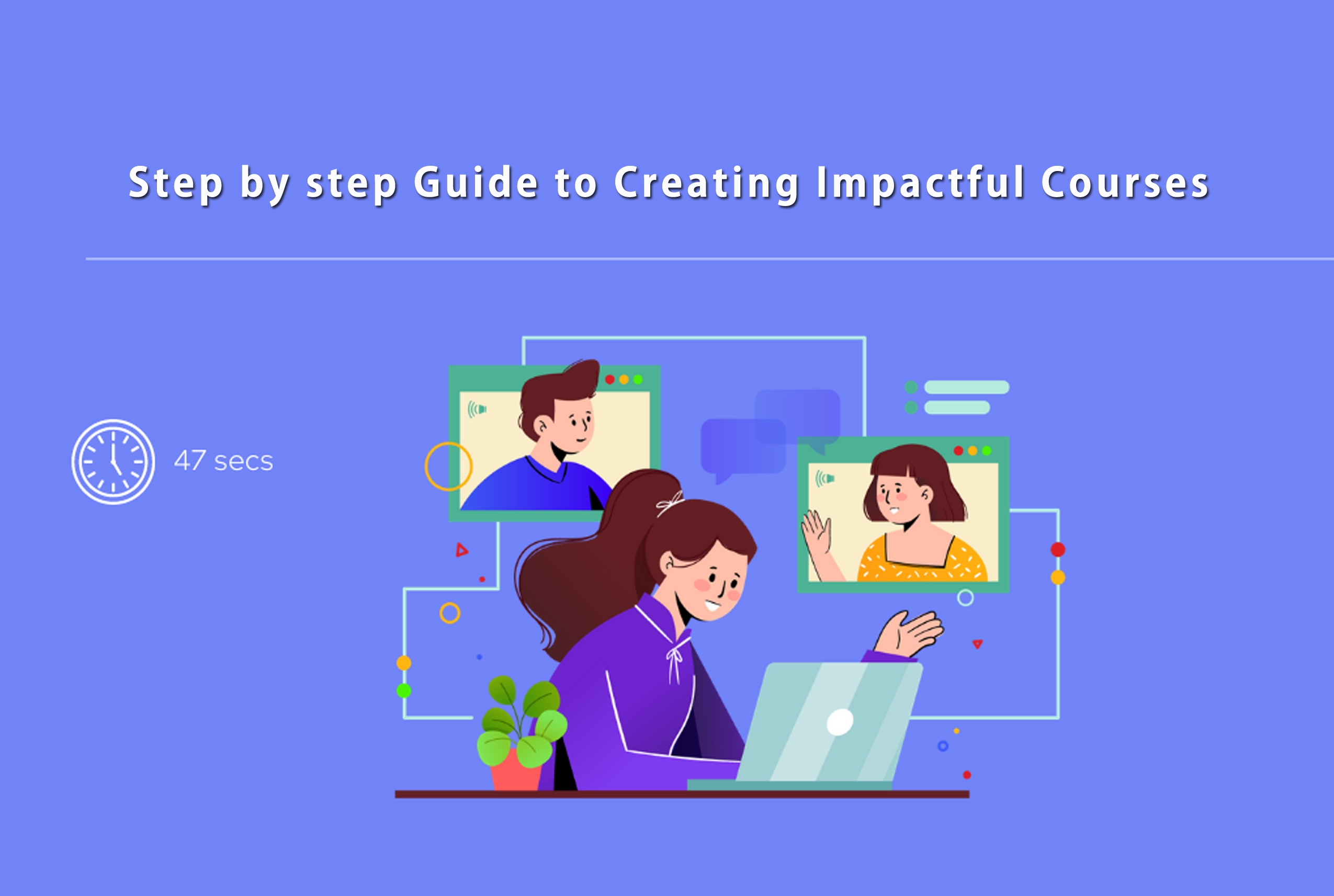Step by step Guide to Creating Impactful Courses
Developing online educational or training content might seem as simple as tossing together videos, modules, and images. However, seasoned creators understand that such undertakings require considerable effort and time, which can be overwhelming for beginners.
The secret to producing meaningful courses efficiently and effectively lies in a well-strategized approach. Prioritize planning, establish your course framework first, and then focus on content creation. This method saves time and reduces stress. Let’s explore how to achieve this:
1. Identify Your Audience
Your course could be exceptionally interactive and informative, but if it fails to resonate with your learners, its appeal diminishes.
Every aspect of your course – language, content, intended learning outcomes – should be tailored to your audience. For example, does the language need to cater to employees or managers? Is the course meant for a specific department in your organization?
Also, remember to consider your learners’ diversity. For instance, will your course cater to learners with disabilities? Is it accessible to assistive devices or technology? Clear audience definition is the first step towards a valuable learning journey.
2. Establish Your Learning Goals
Course creation can inspire creativity, but it’s crucial not to lose sight of your objectives. Define the course’s intended learning outcomes to guide the course creation process.
Some questions to help you outline your goals include:
- Is the goal to equip your learners with a new skill, company policy, or procedure?
- How will you assess learner success?
3. Determine Your Course Topic
Once your objectives are clear, you can choose a topic relevant to your goals. For broader subjects, pinpoint the specific aspects you wish to cover. For instance, if you’re discussing mobile technology, would hardware or software be more pertinent to your audience?
4. Collate Your Resources
With defined objectives and a topic that aligns with these, the next step involves gathering relevant resources. Think about the core components of your course and the research required to effectively communicate them.
5. Plan Your Course Structure
The organization of your course significantly influences its impact. Whether you’re considering microlearning, sequential learning, blended learning, or virtual sessions, ensure your course is systematically designed and is mobile-friendly.
6. Develop Course Content
With your groundwork complete, it’s time to enjoy the creative process of content creation. From graphics and videos to interactive elements, your course can be enriched in multiple ways. However, each addition requires substantial effort, so consider:
- Whether you require professional assistance like copywriters or graphic designers.
- If there are specific branding guidelines to follow.
- The budget you have for content creation.
The process of crafting impactful eLearning experiences starts with comprehensive planning. Green Learning Management System (LMS) can further streamline your journey. Green LMS allows administrators to develop engaging, effective, and entertaining courses quickly and conveniently. Its interactive features promote information retention and make learning enjoyable.
Furthermore, Green’s content partnerships offer access to over 30,000 pre-built resources to fast-track your training program’s launch. You can also use analytics to track course completion, assess learner satisfaction, enhance your training program, and much more!
7. Incorporate Assessment Methods
Evaluating learners’ progress is a crucial aspect of course design. Decide on the kinds of assessment you’ll include in your course. Will you use quizzes, assignments, or real-world case studies? Choose an assessment method that suits your learning outcomes and provides actionable feedback for learners.
8. Utilize Multimedia
Combining various types of media enhances your course’s appeal and makes it more engaging. From infographics, videos, and podcasts to interactive quizzes, these elements add depth to your content and increase learner engagement.
9. Implement Accessibility Features
To ensure that your course is inclusive, implement features that cater to learners with disabilities. This may include providing closed captions for videos, audio descriptions, or text-to-speech options.
10. Plan for Course Updates
The world is dynamic, and new information can make your course content outdated quickly. Thus, plan for regular updates to your course. Schedule periodic reviews of your course content to ensure it remains relevant and beneficial to your learners.
11. Market Your Course
Once your course is ready, it’s essential to market it to your potential learners. Use various channels like social media, email newsletters, or even webinars to generate interest and sign-ups for your course.
Remember, producing an impactful eLearning course goes beyond just compiling content. It involves understanding your audience, aligning content with your learning objectives, strategically structuring your course, and utilizing resources effectively.
Green Learning Management System (LMS) makes this process simpler by offering an array of features for administrators. It not only aids in creating engaging, interactive, and effective courses but also provides access to a wealth of pre-built content. With Green LMS, you can monitor course completion, assess learner satisfaction, and continually enhance your training program. It’s a holistic solution for creating impactful eLearning experiences.
Read more about LMS for Business, LMS for University and College, and LMS for Schools
Start free LMS trial now – Try the Green LMS for free
Ask for a free demo of the Green LMS suite. Start for Free and Pay as you Grow. Free trial. Cloud-based LMS. Micro-learning gamified. Types: Workplace learning, eLearning Content. Click Here https://www.thegreenlms.com/book-a-demo/


